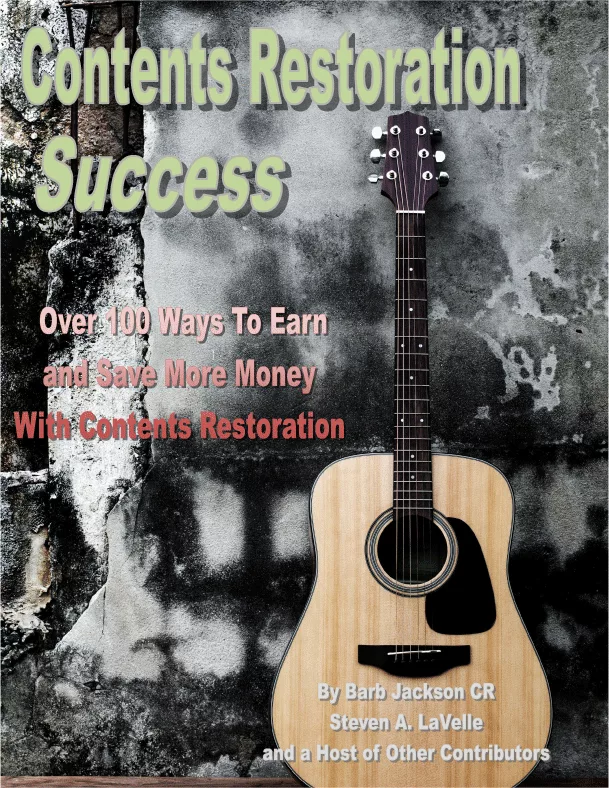Gobble, Gobble — The Reality of Consolidation in Today’s Restoration World

Photo credit: nathaphat / iStock / Getty Images Plus via Getty Images
The news is everywhere. You can’t avoid it. Every month, dozens of your fellow restorers are “selling out.” No, really. Restoration companies are a hot commodity, and eager buyers are on the prowl right now, looking to purchase willing sellers. Why is this happening? Do you want this to happen to you? And if so, what can you do to make yourself more attractive?
Before we get too far down the “extreme makeover” road, let’s stop for a second and look at the history of consolidation and outside financial interest in our industry. I entered the restoration world in 2009 after a 25-year career on Wall Street. I left the crazy world of trading and investing to start a consulting company for small businesses, and my first clients were independent restorers. After only a short time, I wondered why my Wall Street peers were not interested in this marketplace. As it turns out, they were. Even back in the early 2000s, investors were placing bets in our space. Cotton Companies was a major player in the commercial fire and water damage space, with revenue exceeding $80 million in 2005. The next year, Charys Holdings, an Atlanta-based investment firm, bought Cotton. For those who do not know, Belfor was a German conglomerate that built its American footprint by purchasing successful independent restoration companies in major cities throughout the 2000s, eventually folding them into a single operating entity, and growing into the $2 billion behemoth they are today.
There are many reasons that consolidation is taking place at such a rapid pace.
It’s going on everywhere. Takeovers and buyouts are rampant throughout Wall Street due to the wide availability of cheap money. After years of historically low interest rates, available cash for investment firms is at an all-time high, so there is plenty of capital to go around.
You are a hot commodity. When you look at our industry from the outside, there are many factors that make us attractive to people with money. In spite of the large franchise entities that dominate the attention of the public, there are tens of thousands of independent businesses operating in the space. We operate in a recession-proof and inflation-resistant market. Finally, the source of much of our revenue comes from insurance proceeds, making payment more of a “sure thing.”
Building blocks. In the past few years, most of the “big boys” in restoration have received capital infusions or have been bought out. Aside from Belfor and Servpro, larger companies like Interstate, ACT, Paul Davis and Service Master have had new owners come onboard. Now, the new trend is “build it yourself.” Companies are creating their own super-sized entities by purchasing several smaller, successful companies and combining them.
Honestly, you are not a good businessman. I love our profession. Every day, I see the passion and care our owners and workers put into their trade. We get into the business because we want to make a difference in people’s lives. That said, I also acknowledge that a great many of us are not adept at running our businesses. We don’t focus on the internal things like budgets, money management or cash flows. We make money in spite of ourselves. This void can be filled by the investors, who only see opportunity. They can sweep in and buy your profitable firm, make a few administrative changes, and get a huge return on their investment. It’s a simple numbers game to them, and we are a target-rich environment.
What does all that mean for you? Well, a couple of things. First, your competition may get more professional over the next year, as some of your neighbors may find themselves part of a much larger, more refined team. Second, your staff may find themselves being courted away by these newly-energized companies. Third, your marketing efforts might be jolted by a new reality of the competition- their way will be newer and more aggressive for sure.
Does this mean you should just throw in the towel? Certainly not. It’s time to face reality and accept— and embrace— change. Whether you intend on getting out of the business or fighting the trend, you should be doing things to make your company more attractive; I call it “making you sellable.” Here are a few tips to improving your firm, whether you keep it or sell it:
Get out of the field and into the office
If you are an “Owner-Operator” that still runs out on many (or all) projects, you need to change that— TODAY. Stop thinking about yourself as a restorer; instead, consider yourself as what you really are— a business owner. Start acting like one. A strong business owner cares more about the inside and less about the outside. You might ask yourself, “How can I trust that?” The answer is…
Make your company process-driven
Nick Saban, the winningest college football coach in history, once said that “A good process produces good results.” A company that runs based on good processes has a much greater value than one that relies solely on the people. Your staff can come and go, and their expertise levels may change, but a good process-driven system will keep things consistent. Buyers want systems; they will pay more when they know your success doesn’t rely primarily on you or your key personnel.
Market better
The old marketing plans you have used (up to this past year) are a thing of the past. To succeed today, you need to be flexible and think outside the box. Today’s client doesn’t care about you; they want to know what you can do for them. Be ready to accept the fact that you might need to change everything about your current marketing plan in order to survive and thrive.
Work on an exit scenario
There’s an old expression that “Everyone has their price.” Well, do you? Today’s reality is such that, at any time, you might get a knock on the door from a guy with cash in hand. Are you ready for that knock? What would be your price? What would you do next? Play that scenario out in your head before it happens so you can be prepared and ready to move just in case.
Explore more tips on managing your restoration business
I have been involved with a few clients that have gone through an acquisition in the past year, and the one thing I can share from these experiences is that more is on the way. Every suitor seemed to have a voracious appetite when it came to restoration, and their fangs (and checkbooks) were out. The clients that had a successful transition were not looking to be bought— it just happened. Once they got their minds around the reality, everything was great. If you want this to be you, keep working hard but always keep an eye out. You just might be next in line.
Looking for a reprint of this article?
From high-res PDFs to custom plaques, order your copy today!









